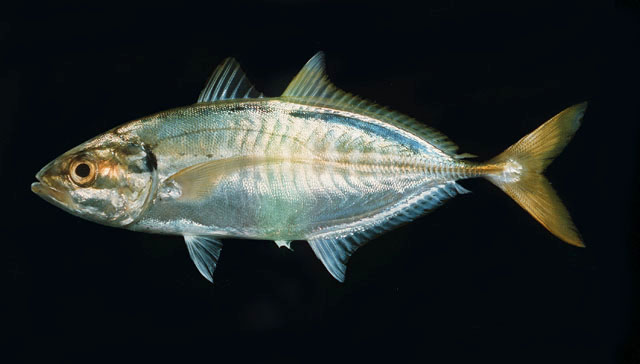| Carangidae (Jacks and pompanos), subfamily: Caranginae |
| 30 cm TL (male/unsexed) |
|
reef-associated; depth range 1 - 80 m |
| Indo-Pacific: Red Sea and the east coast of Africa to the Hawaiian Islands and Samoa, north to Japan (Ref. 559), south to the Arafura Sea (Ref. 9819) and northern Australia. |
|
Dorsal spines (total): 9-9; Dorsal soft rays (total): 22-25; Anal spines: 3-3; Anal soft rays: 18-21. Description: Body olive green dorsally, shading to white or silvery ventrally; prominent black spot posteriorly on opercle at level of upper eye; often with 10 dark bars on side of body; dorsal and caudal fins dusky greenish yellow (Ref. 2334, 90102). Body oblong, moderately compressed, with dorsal and ventral profiles almost evenly convex. The adipose eyelid completely covering the eye except for a vertical slit centered on pupil. (Ref. 90102) |
| Adults inhabit mangroves and coastal bays. They form schools (Ref. 4887), or singly (Ref. 48635). Pelagic (Ref. 58302). Mainly diurnal. They feed on cephalopods, crustaceans and planktonic invertebrates such as copepods (Ref. 5213, 90102). Fast swimming in midwater in pursuit of zooplankton (Ref. 48635). |
|
(Ref. 96402)
|
| harmless |
|
Source and more info: www.fishbase.org. For personal, classroom, and other internal use only. Not for publication.
Page created by Jen, 05.08.02,
php script by kbanasihan 06/09/2010 ,
last modified by
dsantos, 20/08/10

